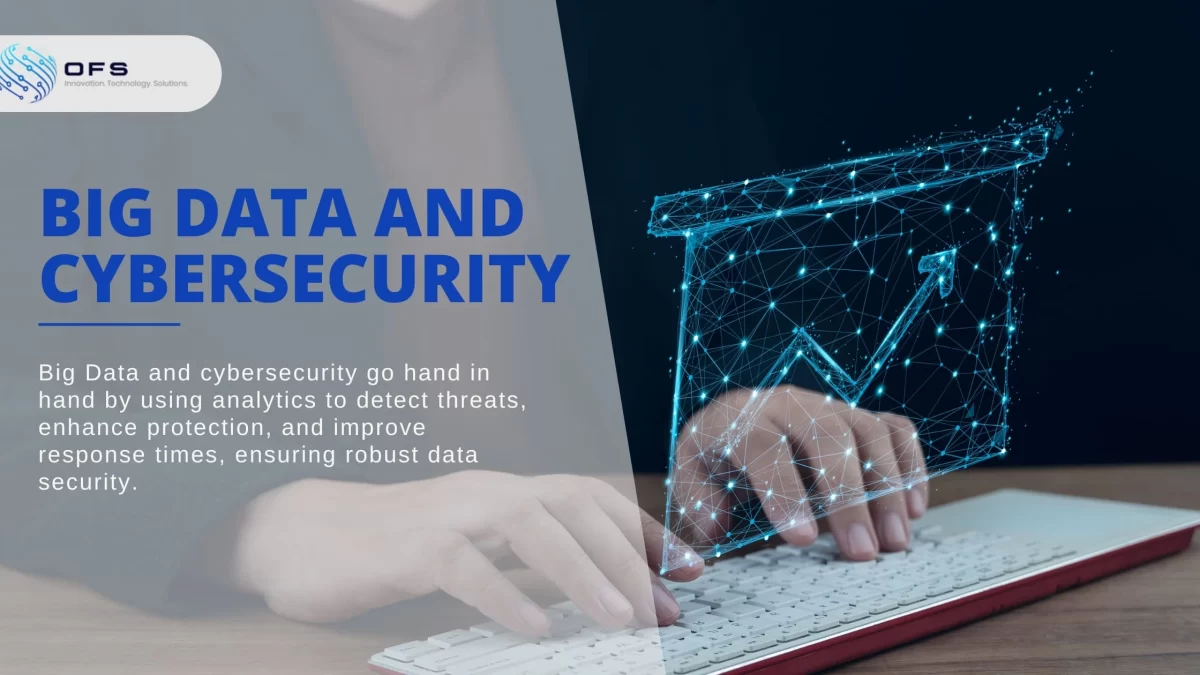Two of the most prominent topics in today’s tech landscape are big data and cybersecurity.
The discussion around big data is driven by the data being generated at an unprecedented rate. From the moment we log onto the internet, billions of data points are being created every second. And cybersecurity has always been a concern, especially in recent times as malicious actors have advanced ways to outwit you.
While distinct fields, they are somehow deeply interconnected. In fact, they can boost each other’s efficiencies. And it is easy to see why. When used together, they can create a robust synergy that boosts the strength of both.
For example, by analyzing massive datasets of network traffic, user behavior, and system logs, you can figure out unusual patterns that may indicate a cyberattack (e.g., unusual login attempts, abnormal data transfers, and unexpected spikes in network activity.)
Talking about cybersecurity plays an important role in protecting those massive datasets from unauthorized access and misuse.
In this blog, we learn how both entities are made for each other. Moreover, let’s see how this integration can benefit your organization.
How Big Data Helps Cybersecurity
Threat Detection & Response:
One of the biggest ways big data helps cybersecurity is by spotting threats.
Big data looks at tons of information to spot anything strange happening in your tech infrastructure.
Spotting Unusual Patterns:
Big data looks at lots of different types of information—like how people use a system, network traffic (the flow of information), and even user behavior.
By looking at this data, big data can spot unusual patterns that might mean someone is trying to hack into the system. For example, if there are a lot of strange login attempts, or if data is being transferred in ways it shouldn’t be, big data can catch it before it becomes a bigger problem.
Real-Time Alerts:
Big data doesn’t just sit and wait. It constantly watches for new threats and sends alerts in real-time. This means that organizations can act fast to stop an attack before it does a lot of damage. Big data helps pull information from all kinds of places, like social media, the dark web, or even specific threat feeds, so it’s always on the lookout for danger.
Responding to Cyberattacks:

If a cyberattack does happen, big data helps by showing where the attack came from, what damage was done, and how to stop it from happening again. For example, it shows the sources or root cause of the attack or the attack vector and the affected systems. It also helps assess the extent of the damage caused by the attack. By quickly identifying the source and scope of the attack, security teams can take swift action to contain the damage and prevent further spread.
Proactive Security Measures:
Big data also helps prevent attacks from happening in the first place.
Identifying Weaknesses:
Big data can help find weak spots in a company’s systems. These are the areas that hackers could try to exploit. Once these weak spots are found, it’s easier to fix them before they become a problem.
Fixing Vulnerabilities:
Security teams can use big data to track known problems or bugs in the system. They can then make changes or updates to close those gaps, making the system more secure.
Improving Security:
Big data helps companies figure out how strong their security is. It helps identify which parts of the system need more protection and helps them improve their overall security to stay one step ahead of potential hackers.
How Cybersecurity Protects Big Data
While big data helps protect us from cyberattacks, cybersecurity helps protect big data itself. Cybersecurity is like a security guard who makes sure no one can mess with the important information being collected and used.
Protecting Sensitive Information:
To keep important data safe, cybersecurity uses several methods. These include encryption, access control, and data loss prevention.
Data Encryption:

Encryption is like putting data in a secret code so that no one can read it unless they have the right key. Whether the data is being sent or stored, encryption keeps it safe from hackers.
Access Control:
Not everyone should have access to important data. Cybersecurity makes sure that only authorized people can see or use the data. This is done through things like strong passwords, two-factor authentication, and security checks.
Data Loss Prevention (DLP):
DLP is like a security alarm that stops sensitive information from being stolen or leaked. It makes sure data stays within the company’s network and doesn’t accidentally get shared with unauthorized people.
Combining Big Data and Cybersecurity
Here is a scenario to understand how big data and cybersecurity can be made work together.
Big data enhances cybersecurity by collecting relevant data from sources like network traffic, endpoint logs, and social media.
It’s stored in scalable solutions like AWS or Hadoop and processed using tools like Spark. Data is analyzed for patterns and threats in real-time, with security measures such as encryption and access control.
Integration with tools like SIEM and SOAR helps improve threat detection and response. Continuous skill development and strategy improvement are key to success.
Key Considerations
- Data Quality: For big data to be useful, the data needs to be accurate and complete. If the data is poor quality, the analysis might not be effective.
- Skill Development: Organizations need to invest in training data scientists, security analysts, and engineers to properly use big data for cybersecurity.
- Continuous Improvement: Cybersecurity is an ongoing effort. Regularly reviewing and improving your big data and security strategies will help you stay one step ahead of cybercriminals.
Key Takeaways
Big data and cybersecurity are a team. Big data helps make cybersecurity stronger by spotting threats and improving security measures, while cybersecurity protects the important data that big data relies on. Together, they create a strong defense system that helps keep our online world safe.
Organizations need both strong cybersecurity measures and the right tools to use big data for security purposes. Without both, it would be much harder to keep data safe and stop attacks before they happen
So, next time you hear about big data or cybersecurity, remember how they work together to keep everything safe. If you’d like to learn more, feel free to ask!

